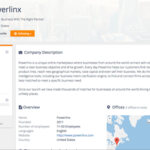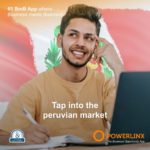The Special Ingredient in Unicorn Companies’ Jaw-Dropping Growth? Partnerships
Once a myth, the billion-dollar startup is emerging in many shapes and forms, introducing technologies that are quickly changing the world we live in. Defined as companies that have grown into valuations of $1 billion or more, these “unicorn” companies provide tried and true models any business can consider for growth and scaling.
What’s the special ingredient that’s led to many of these companies’ growth? Partnerships.
Space X
Aerospace technology company Space X is gaining some of its largest contracts through partnerships. Through winning NASA’s Commercial Orbital Transportation Services contract, SpaceX will receive $2.6 billion to upgrade its Dragon spacecraft and begin shuttling NASA astronauts to the International Space Station in 2017. In January the company announced a partnership with Google, which aims to build up Google’s Project Loon with the addition of solar-powered drones to increase Internet access around the world.
Currently Space X is valued at $10 billion.
Square
Perhaps known for opening the doors to credit card payment processing for small businesses, Square is a tech unicorn valued at $6 billion. Founded in 2009, the mobile payments startup grew to 1 million merchants by the end of 2011 (with a total of only 8 million merchants accepting credit card payments in the U.S.).
During its early days, Square utilized partnerships to gain initial user traction. Through retail partnerships with Apple, Wal-mart, Best Buy, RadioShack, Target, OfficeMax and UPS, Square created a presence in 10,000 brick-and-mortar stores by the start of 2012.
A strategic investment partnership with Visa didn’t hurt Square’s credibility, either, and opened the door for future joint ventures.
Uber
Mobile-based transportation network Uber has taken the taxi industry by storm, earning a reputation for convenience and innovation. Besides its record-shattering $41.2 billion valuation, Uber is known for the staggering speed of its user acquisition. Just six months after its official launch in June 2010, Uber had fulfilled between 10,000 and 20,000 rides and acquired between 3,000 and 6,000 users.
How did Uber rake in so many early adopters? As noted by Morgan Brown, Uber strategically sponsored tech and venture capital events in San Francisco, fully aware that attendees were members of large audiences receptive to new technologies. By offering free rides to attendees, Uber launched the first wave of its exponential word-of-mouth acquisitions.
Currently Uber is expanding partnerships with transit authorities and mobile apps to placee its offerings where users need them. To name a few examples, today you can find Uber information and order Uber rides through the Google Maps mobile app, the public Transit app and Dallas area rapid transit. In February, Uber announced a partnership with Starwood Hotels, giving members the opportunity to earn Starpoints for Uber rides. And just last week in New York Uber implemented a marketing partnership with HBO and Game of Thrones to give New Yorkers the chance to order rides on a replica of the series’ Iron Throne.
Sprinklr
Sprinklr aims to be “the most complete social software company in the world.” Originally launched as a social media management service, the fledgling startup has acquired five businesses in the past 14 months that have allowed it to vastly expand its breadth. The companies include:
- Customer engagement service Pluck
- Advocacy and influencer marketing platform Branderati
- Brand analytics company Dachis Group
- Facebook ad optimization platform TBG Digital
- And, most recently, online community platform Get Satisfaction, which connects businesses with their customers
According to Sprinklr CEO and founder Ragy Thomas, the $1.17 billion-valuated company tripled its revenue and bookings between 2013 and 2014. With its recent acquisitions, Sprinklr is on its way to further scaling and to becoming a true omnichannel for online customer relations.
Snapchat
Snapchat is one of the world’s fastest-growing mobile communications platforms. Currently valued at $10 billion, Snapchat was the fastest-growing mobile apps in terms of users at the end of 2014.
Partnerships are a vital part of Snapchat’s growth strategy as the company strikes deals for expansion into new markets and to drive further activity on the app. Last year saw the acquisitions of QR scanning and iBeacon startup Scan.me, eyeglass video camera manufacturer Vergence Labs and voice and video chat company AddLive; November marked Snapchat’s growth into payment processing through a deal with Square; and January saw the release of Snapchat’s Discover tool, the result of partnerships with media powerhouses like CNN, Comedy Central, ESPN, National Geographic, Food network and Vice.
Featured image by Gabe Gross









